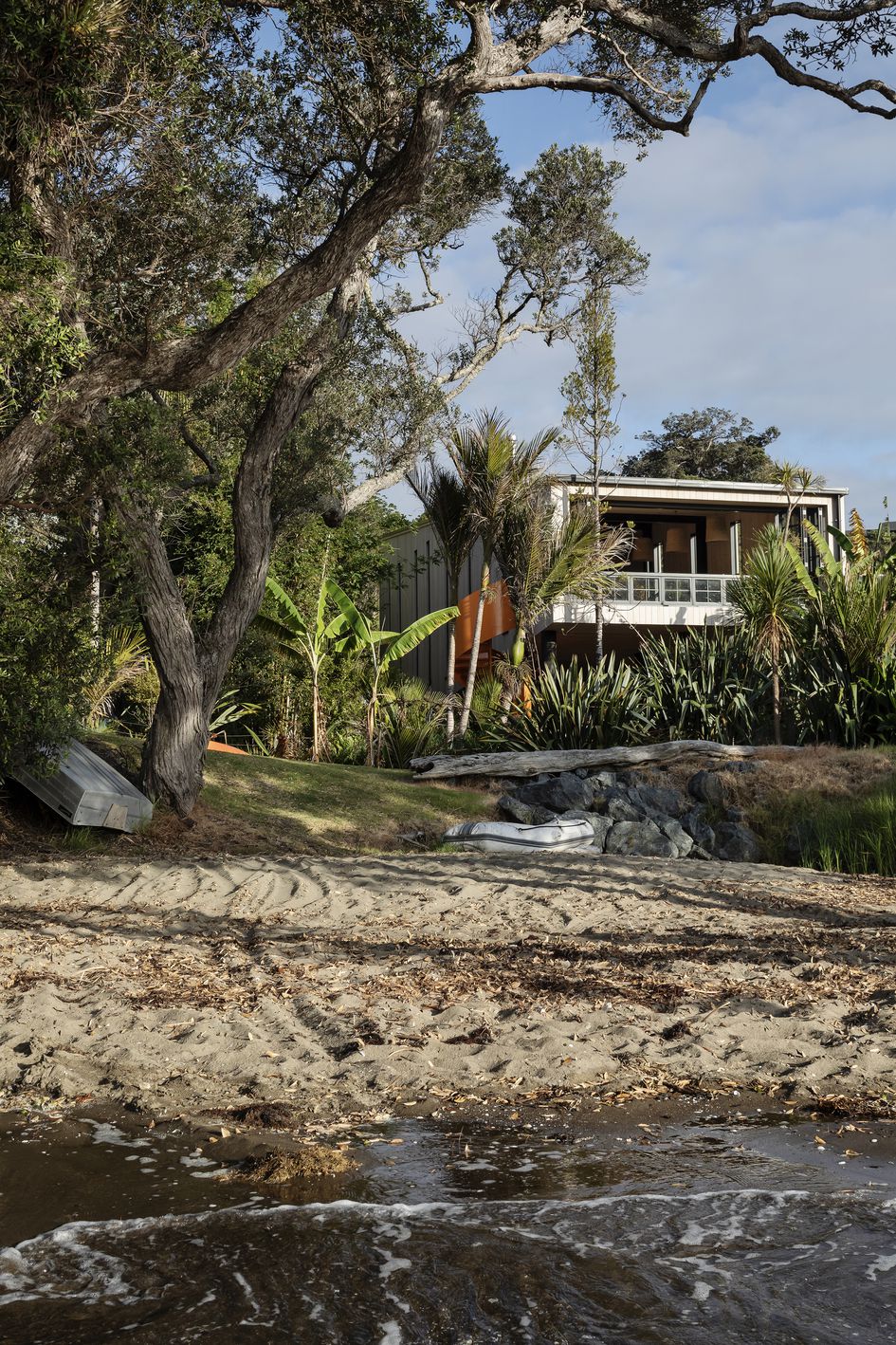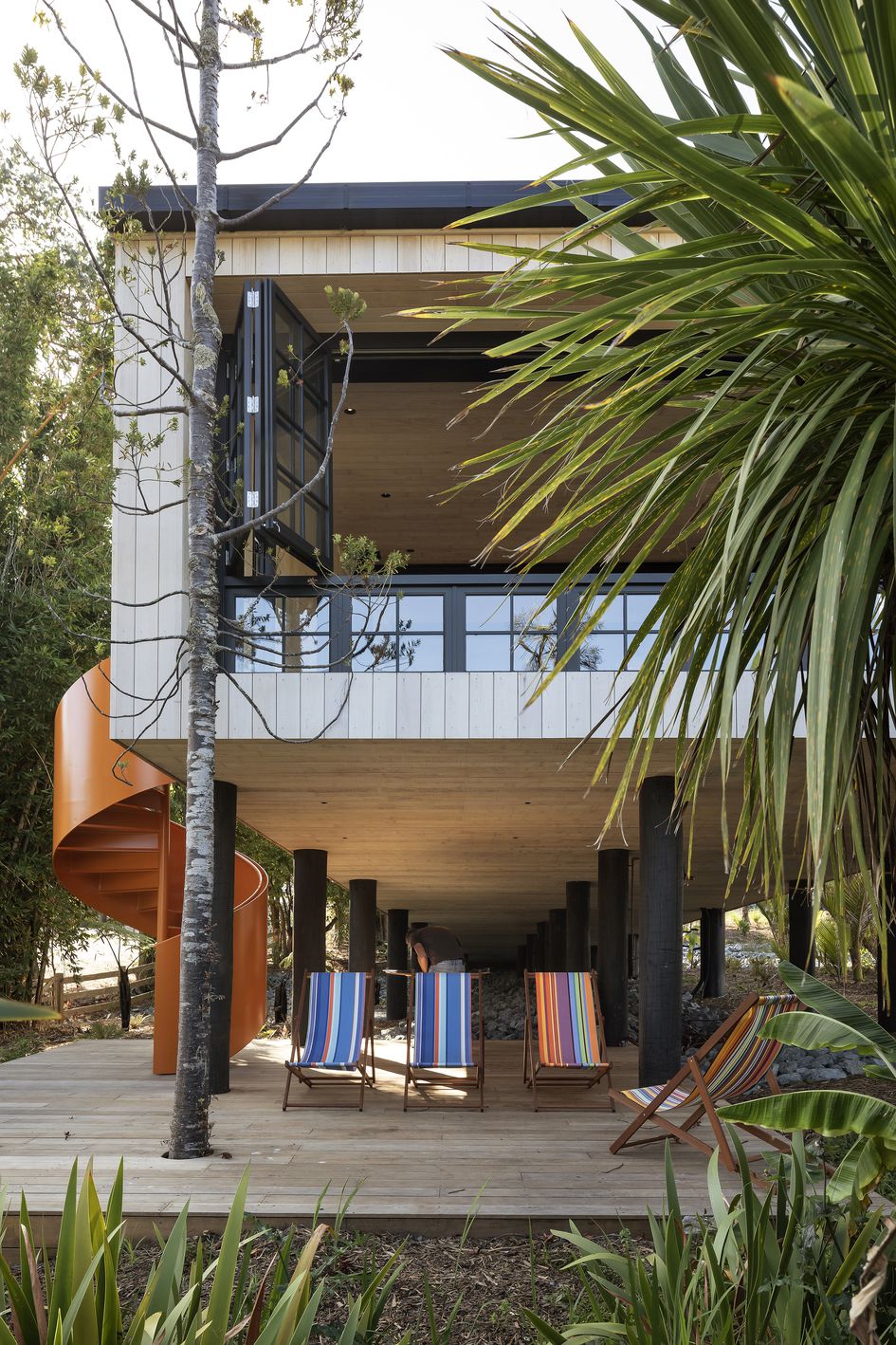Their film crew followed founder and design director Richard Naish as he guided a small group of The University of Auckland architecture students in a special paper that will prove crucial to their future careers (read more about the module here https://rtastudio.co.nz/journal/building-resilience).
The video segment went on to showcase how these philosophies of adapting our built environment to cope with more extreme weather events played out in action at Rich’s own holiday home in Buckleton Beach.
This property, waterfront on the Tawharanui Peninsula, is undeniably going to be subject to the results of climate change: surging seas, stormwater run-off and massive rain events all pose a risk of inundation. Built on ‘stilts’ and with a dry riverbed formed beneath it, water can safely flow under and around the structure. Constructed mainly of timber, a sustainable material, it has a minimal carbon footprint and sits lightly on the land. Using design ideas that adjust to these tempestuous times is, as Rich says, a crucial component of any architectural response. In a way, it is all about allowing the natural landscape and processes to shape beautiful buildings.
Corban Richter, who was the 2020 recipient of the RTA Studio Award for Māori Architecture Students at The University of Auckland, also features in the CNN report. His project for the paper is a waka ama storage facility – envisaged as a building that rises with the tides, buoyancy that will save these precious traditional canoes from damage or loss.
Broadcast on CNN and then loaded on YouTube, we are proud that the five-minute clip is getting the message about the action that designers can take out to the world. We’re evangelical about these lessons and will always put our hand up to participate in projects that advance the cause. You can see the clip for yourself here https://www.youtube.com/watch?v=KM7Smqq53tk

